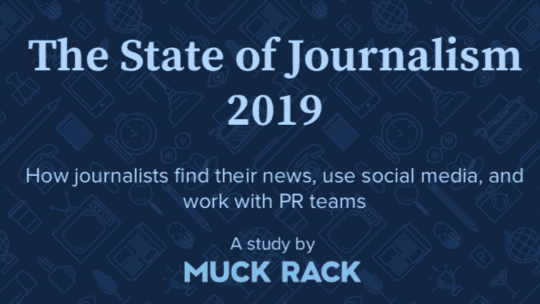
The role of a public relations professional functions around their ability to build relationships between point a and point b. When considering the importance of those relationships, building connections with members of the media remains at the top of the list.
Muck Rack, a journalist database, media monitoring and coverage reporting platform, released its 2019 State of Journalism study last week, highlighting how journalists use social media and work with PR teams. The study found that 47 percent of journalists believe “the way most companies share information with the media is outdated.” It seems the PR industry still has some work to do with building relationships and updating pitching for the digital era.
To understand this study, let’s take a look at the way journalists use social media and how that connects to reporting, research and engagement.
How Journalists Use Social Media
Don’t waste any time looking for journalists on Facebook. Eighty-three percent of those surveyed said Twitter is their “most valuable” network, up from 70 percent last year. LinkedIn ranked third, but is growing—up 26 percent from 5 last year—so remember to keep that profile in shape, too.
Journalists do accept developing a relationship and getting to know PR folks on social media. Seventy-eight percent of journalists surveyed like when PR pros follow them on social media. Good news for them, because according to Muck Rack’s State of PR 2019, 93 percent of communicators follow journalists on social media.
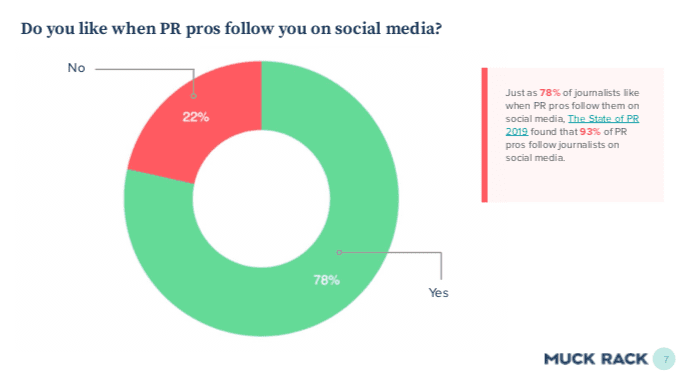
The State of Journalism survey also serves as a reminder to make sure your company’s social media channels are in tip-top shape. When the journalists surveyed are reporting or receiving pitches on a company, they will consult the organization’s social media channels 90 percent of the time. Remember to routinely audit social media platforms and update information and branding where need be. If your company has a brand newsroom, link to it on social media bios so journalists can easily access the latest information and contacts.
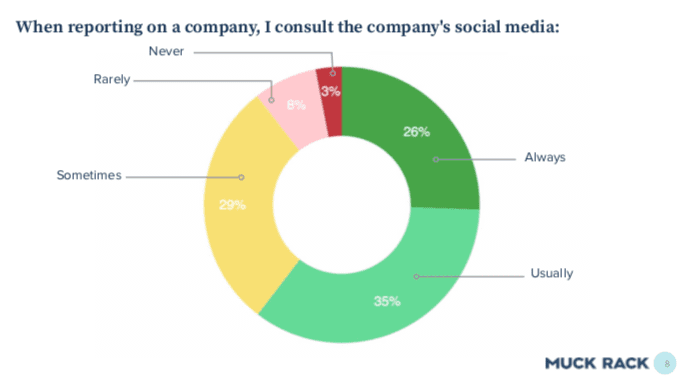
Meanwhile, 71 percent of journalists surveyed said that they track how many times their stories are shared on social media. They also want to know people are reading their work! So make it easier to create engagement for journalists by reposting articles and tagging their handles when they show you some love.
The Best Way to Pitch Journalists
As we mentioned earlier, journalists love their Twitter accounts. But is sliding into their DMs the best way to pitch a story? Nope. According to the study, the most preferred method among journalists is email. Add a brief, descriptive subject line, with a message length of no more than two to three paragraphs, and they just might open your pitch. The number one reason journos reject pitches? A lack of personalization. Also following up too much. Seventy-three percent said that once is enough if you haven’t heard from them.
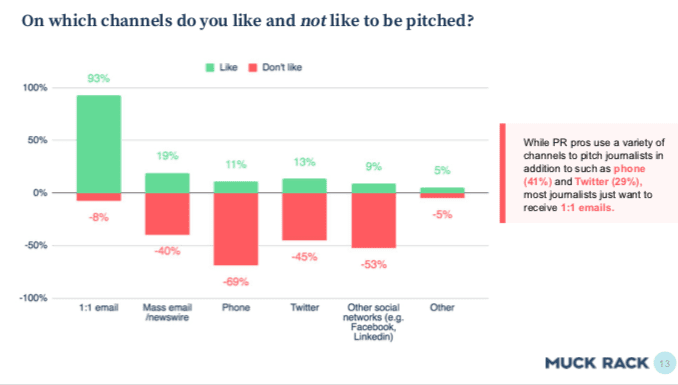
Timing is everything, and the early bird gets the worm. Sixty-five percent of journalists prefer to receive pitches before 11 a.m. If you want to take your time and craft the perfect pitch before the coffee kicks in, prepare your pitches the day before and send them out as your first task of the day. And watch the embargoes. Fifty-seven percent are annoyed by them.
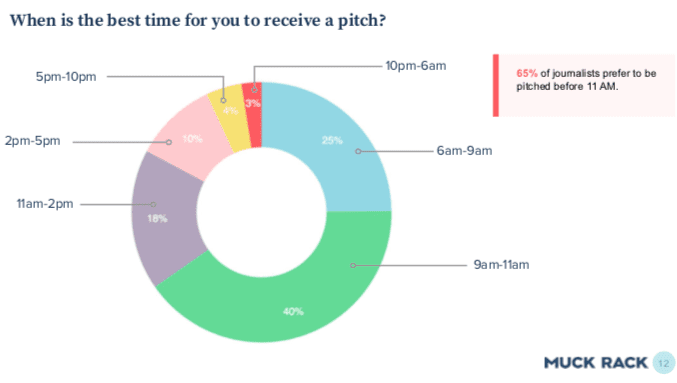
As you can tell, we have not mentioned the use of a phone. While phones are no longer the preferred pitching channel, they can be a great tool to use when developing a relationship with a journalist to see how they are doing or what stories they may be working on. The number one reason journos reject pitches is a lack of personalization. So do your research, and make sure you know who you are pitching to.
Is Media Relations Changing?
As newsrooms shrink and more journalists head into PR and communications positions, the opportunity for closer relationships and understanding between the two industries grows. Up from 49 percent in 2018, 63 percent of journalists surveyed view their relationship with PR pros as mutually beneficial. They are still not privy to view connections as bonafide partnerships, but they recognize the importance of a respectful exchange.
Developing that closeness with a topical beat expert can be a good thing. Journalists want that upper hand, and 76 percent of those surveyed are more likely to cover an exclusive. So develop that trust, and learn about your fellow reporters. Spending the time getting to know someone can be more beneficial than sending out a mass email to 50 reporters with a press release attached.
